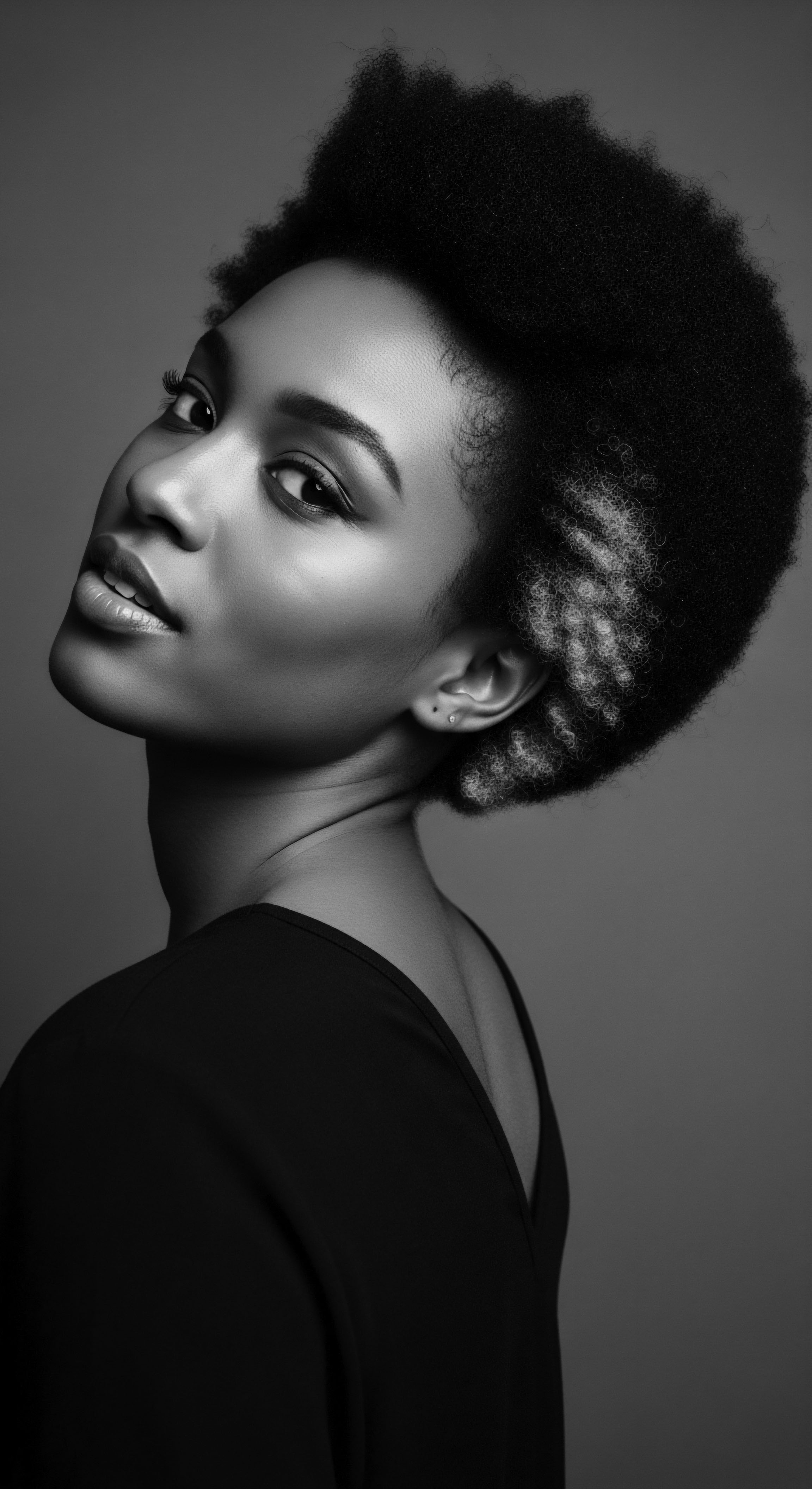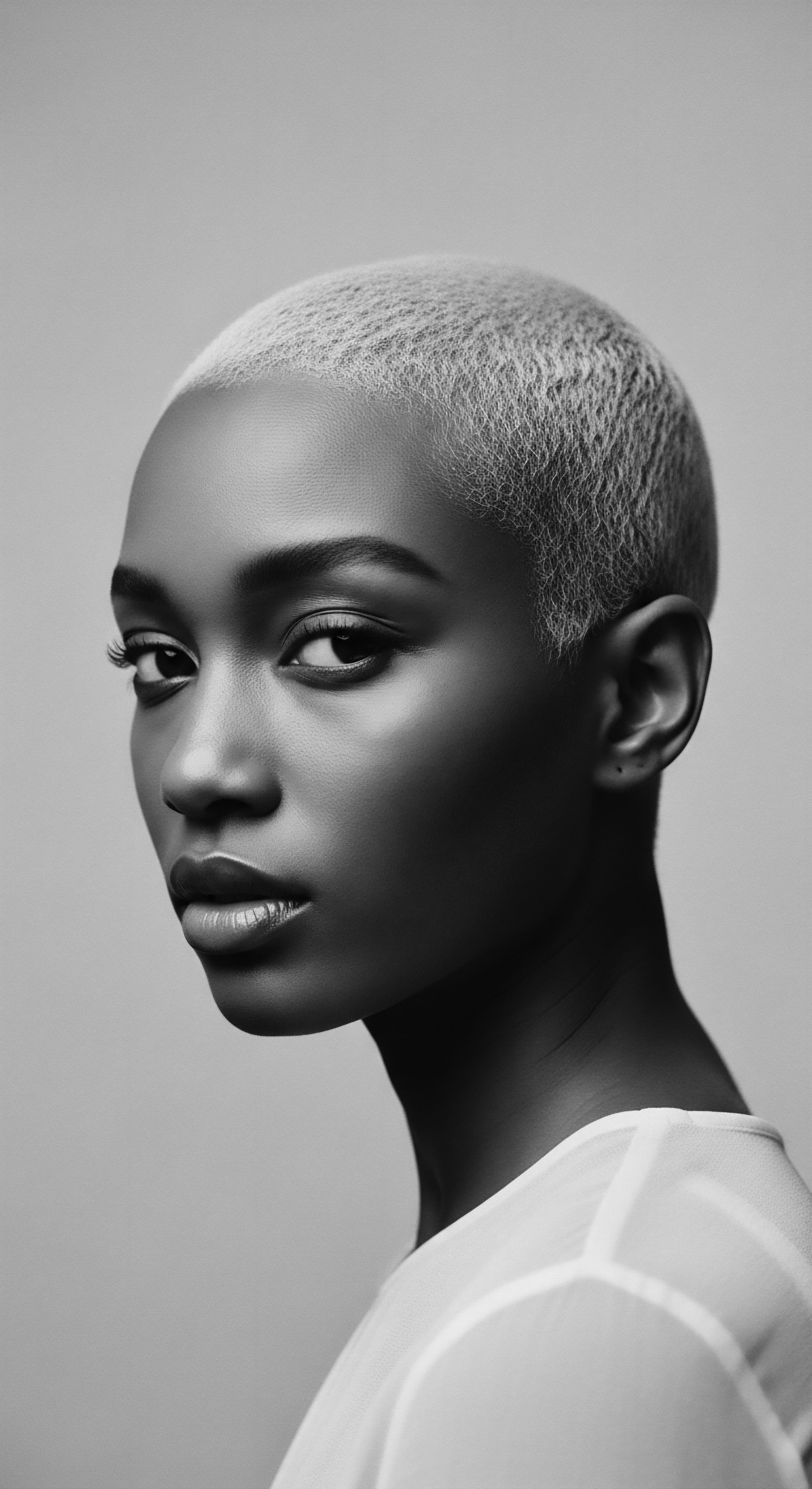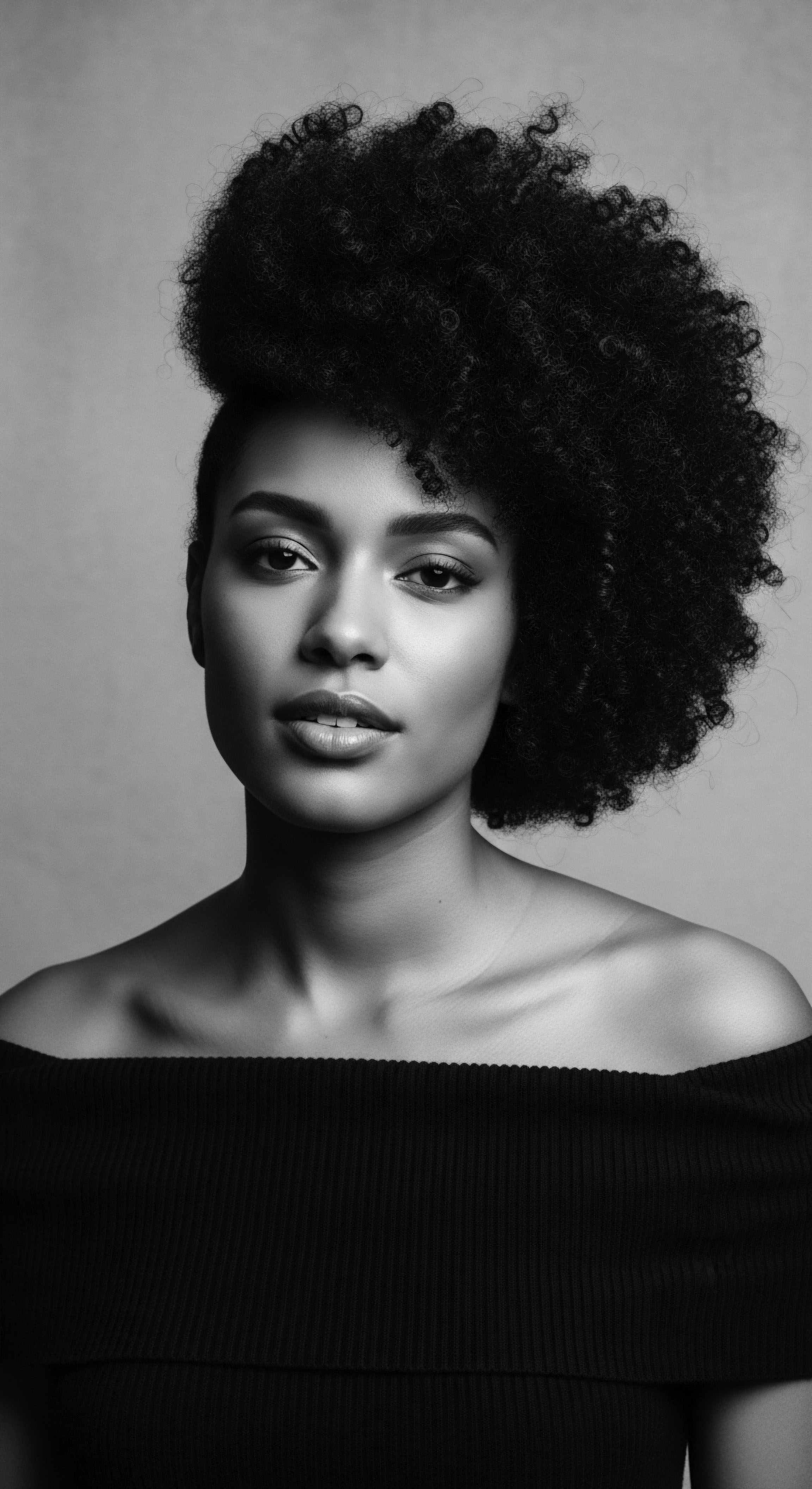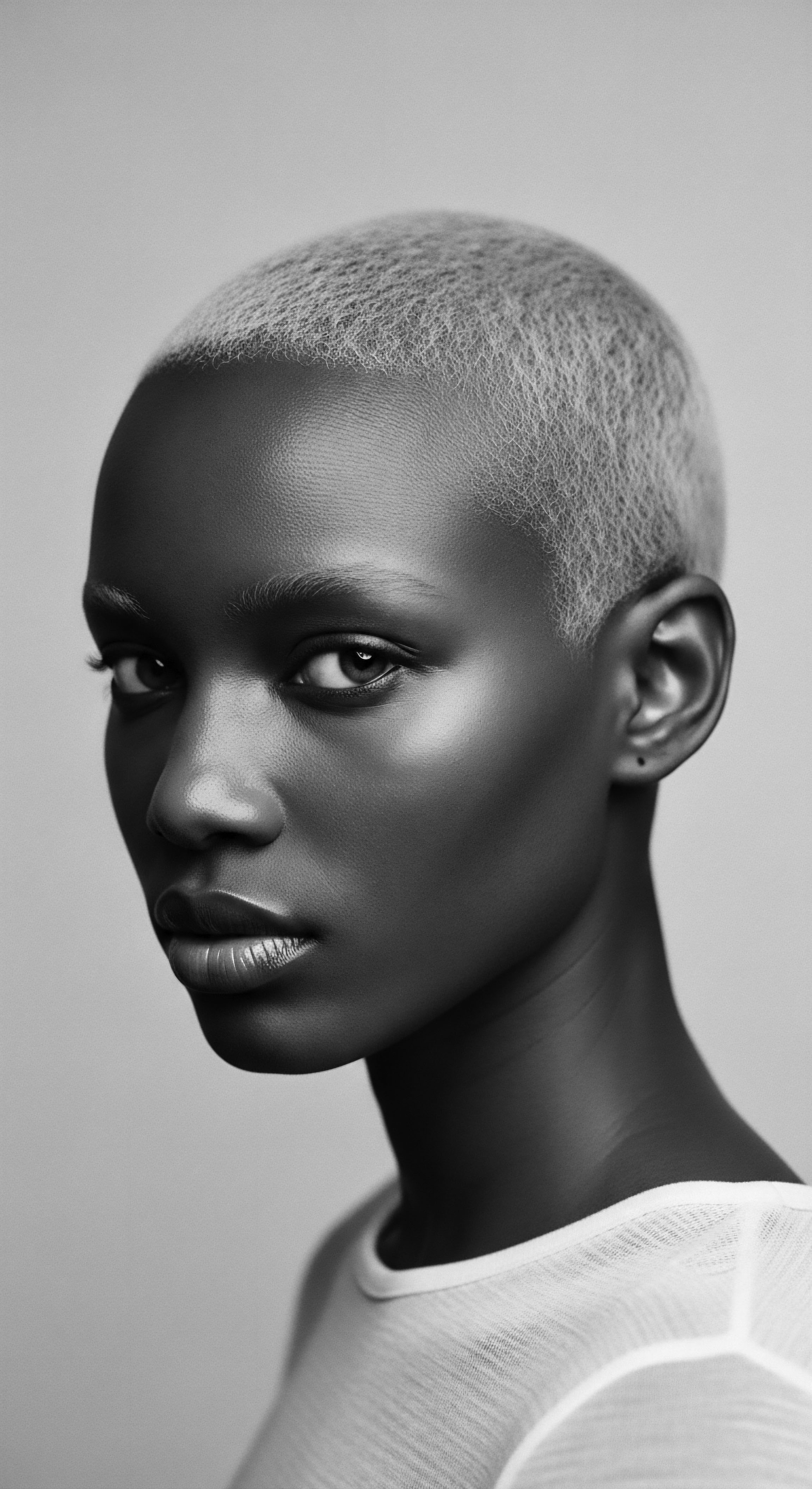
Roots
To behold a single strand of textured hair is to gaze upon a living chronicle. For those of us whose crowns are sculpted by the earth’s magnificent patterns, hair is more than mere protein; it is a profound connection to generations spanning continents and centuries. How ancestral minerals fortify these resilient coils and spirals speaks to an unbroken lineage, a wisdom gleaned from the very ground beneath our ancestors’ feet. This inquiry begins at the source, where the elemental generosity of our planet first offered its strengths to the strands that have always adorned us.
Our journey to understand hair begins with its fundamental make-up, a blend of biology and the environmental story of humanity. Textured hair, with its unique helical structure, presents particular needs and strengths. Its intricate curves and twists, a signature of many Black and mixed-race ancestries, can create points of vulnerability for moisture loss and breakage.
Yet, this very architecture also lends itself to incredible versatility and resilience, a testament to its enduring nature through the ages. The hair shaft, a complex structure, requires specific nourishment to maintain its integrity.

The Elemental Script of Hair
Hair, at its core, is primarily composed of Keratin, a protein. This protein matrix is strengthened by various bonds, including disulfide bonds, which give hair its structural stability and curl pattern. Beyond protein, trace minerals play a subtle yet significant part in hair health, contributing to enzymatic processes and structural integrity. These minerals, often overlooked in modern discourse, were once central to the care practices of our forebears.
Consider the natural world around ancestral communities ❉ the earth itself, the rivers, the plants that drew sustenance from the soil. These were the wellsprings of the minerals that found their way into traditional hair preparations.
From the soils of ancient Africa to the volcanic lands of the Americas, communities utilized what the earth provided. The presence of minerals like Silica, Magnesium, Calcium, and Potassium within these natural compounds was, and remains, crucial. Such elements support the very biological processes that underpin hair health. For instance, magnesium has known anti-inflammatory properties, which can support a healthy scalp, a fundamental basis for strong hair.
Calcium contributes to cell renewal and healthy hair growth. Understanding these basic biological roles connects our current scientific lens with the intuitive wisdom of past generations.
Ancestral hair care practices, woven into daily life, underscore a deep reverence for the earth’s elemental contributions to hair health.

How Does Earth’s Bounty Transform Hair?
The historical application of mineral-rich materials to textured hair extends far beyond simple cleansing. These practices often sought to fortify the hair’s outer cuticle, the protective layer of overlapping scales. A healthy cuticle lies flat, reflecting light and retaining moisture, which is especially important for textured hair prone to dryness.
Minerals, when applied through traditional masks or rinses, could interact with the hair shaft, forming a protective film or contributing to the cuticle’s integrity. This interaction helps to minimize friction and environmental strain, leading to reduced breakage and greater length retention, a common aspiration across hair traditions.
A notable example of this ancient wisdom is the use of Ghassoul Clay, also known as Rhassoul clay, from the Atlas Mountains of Morocco. This mineral-rich volcanic clay has been used for centuries in North African beauty rituals for both skin and hair. Its high content of silica, magnesium, calcium, and potassium cleanses the scalp without stripping natural oils, helps regulate sebum production, and can leave hair supple and light.
The name “Rhassoul” itself derives from the Arabic word “rassala,” meaning “to wash,” speaking directly to its ancient cleansing properties. The Moroccan hammam ritual, a cornerstone of communal care, frequently featured Ghassoul clay, reflecting its cultural significance.
Another powerful example of mineral fortification comes from the women of Chad, who have used Chebe Powder for centuries to maintain their long, strong hair. While Chebe powder itself is primarily botanical, composed of ingredients like Croton gratissimus seeds, mahleb, missic resin, and cloves, its application often involves mixing with natural oils and butters, which can sometimes be sourced from mineral-rich lands or combined with mineral waters. The purpose of Chebe is not to stimulate new hair growth directly, but rather to strengthen existing hair, making it less brittle and more resistant to breakage, thereby supporting length retention. The constituents in Chebe powder, including fatty acids, proteins, and antioxidants, work together to fortify the cuticle, providing a protective barrier.
The practice of incorporating earth-derived elements speaks to a profound ecological understanding, recognizing that hair health was intertwined with the health of the environment. These ancestral practices were not random acts, but careful, intentional applications, passed down through generations, shaped by the local geology and plant life.
| Mineral/Clay Ghassoul Clay (Rhassoul Clay) |
| Geographical Origin Atlas Mountains, Morocco |
| Traditional Benefits for Hair Cleansing, softening, scalp balancing, volume. |
| Modern Scientific Alignment High in silica, magnesium, calcium, potassium; removes impurities, balances sebum, strengthens strands. |
| Mineral/Clay Bentonite Clay |
| Geographical Origin France (Montmorillon), Wyoming (Fort Benton) |
| Traditional Benefits for Hair Hair cleansing and softening. |
| Modern Scientific Alignment Absorbs excess oil and impurities, may stimulate healthier growth by cleansing scalp. |
| Mineral/Clay These mineral-rich clays, born of ancient geological processes, reflect a timeless connection between the earth and textured hair vitality. |

Ritual
The tender care of textured hair, particularly within Black and mixed-race communities, has always been more than a mere chore. It is a ritual, a sacred practice steeped in collective memory and ancestral wisdom. These rituals were not just about aesthetics; they were acts of resistance, self-preservation, and profound cultural expression. The very methods employed to fortify hair with ancestral minerals speak to a philosophy of holistic wellbeing, where the connection between the body, spirit, and the earth was understood as fundamental.
Across the vast and varied landscape of Africa and its diaspora, traditional hair care was highly localized, drawing upon the unique botanical and mineral resources available. The deliberate application of earth’s gifts, often through elaborate processes, transformed hair care into a ceremonial engagement with heritage. This deeply embedded cultural context informs our contemporary understanding of how ancestral minerals lend their strengths to textured hair.

Practices Honoring the Strand’s Story
The preparation and application of mineral-infused treatments often involved communal gatherings, a transfer of knowledge from elder to youth. Consider the process of preparing Chebe Powder ❉ the grinding of seeds, the mixing with oils, the methodical application to the hair, section by section. This was a shared endeavor, a moment of teaching and connection.
The powder, often mixed with natural oils and butters like Shea butter, was applied to damp hair, then braided to seal in the moisture. This technique, passed down through generations, is a living testament to the efficacy of traditional methods in reducing breakage and promoting length retention.
The women of the Basara Arab tribe in Chad, known for their long, resilient hair, have long adhered to a regimen that integrates Chebe powder. Their practices reveal a sophisticated understanding of hair needs, focusing on protecting the hair shaft from the rigors of daily life and environmental exposure. It is a practice rooted in consistency and patience, reflecting the enduring spirit of their heritage.
Traditional hair care rituals, rich with mineral applications, are deeply rooted in community, intergenerational teaching, and a reverence for natural resources.

How Do Ceremonies Strengthen Hair’s Resilience?
The effectiveness of these ancient practices often resides in their synergistic nature. It is not simply the mineral itself, but its preparation, the other ingredients it is combined with, and the method of application that yields the desired results. For instance, the use of clays like Ghassoul was often part of bathing rituals, allowing the minerals to gently cleanse while also soothing the scalp and improving hair texture. These traditional washes contrast sharply with some modern synthetic shampoos that can strip natural oils, leading to dryness in textured hair.
Many traditional applications of ancestral minerals were designed to address the specific vulnerabilities of textured hair, particularly its tendency towards dryness and breakage due to its coiled structure. By providing a protective barrier, promoting scalp health, and supporting the hair shaft’s structural integrity, these rituals reinforced hair’s natural resilience. The meticulous nature of these traditional routines speaks volumes about the value placed on hair within these cultures, recognizing it as a powerful marker of identity and status. (Ukwu, 2000)
- Traditional Cleansing ❉ Many ancestral practices used mineral-rich clays, such as Ghassoul, as gentle cleansers that did not strip the hair’s natural oils.
- Moisture Sealing ❉ Minerals were often combined with nourishing plant oils and butters, creating a protective barrier to lock in essential moisture.
- Scalp Health ❉ The antimicrobial and anti-inflammatory properties of certain minerals, like magnesium in Ghassoul clay, fostered a healthy scalp environment, crucial for hair growth.
| Traditional Practice Chebe Powder Application |
| Key Mineral/Component Botanical blend (often with accompanying mineral-rich waters/oils) |
| Cultural Context Chad, Bassara Arab women; intergenerational practice. |
| Benefit for Textured Hair Reduces breakage, aids length retention, fortifies cuticle. |
| Traditional Practice Ghassoul Clay Wash |
| Key Mineral/Component Magnesium, silica, calcium, potassium |
| Cultural Context Moroccan Hammam ritual; ancient North African cleansing. |
| Benefit for Textured Hair Gentle cleansing, scalp balancing, softness, shine. |
| Traditional Practice Herbal/Mineral Rinses |
| Key Mineral/Component Silica (from horsetail), various trace minerals |
| Cultural Context Pan-African practices; plant-based wisdom. |
| Benefit for Textured Hair Strengthens hair, improves circulation, removes buildup. |
| Traditional Practice These rituals illustrate how communities ingeniously employed natural elements to support hair vitality, deeply integrating care into daily life. |

Relay
The enduring presence of ancestral minerals in contemporary textured hair care marks a profound relay of wisdom across time. This is a story of tradition meeting modernity, where the science of today often validates the intuitive knowledge of yesterday. The sophisticated chemistry of hair, when understood through the lens of geological and botanical resources, reveals how earth’s gifts have always held the keys to resilience for textured strands. This ongoing dialogue between ancient practice and modern understanding allows us to appreciate the deep, interconnected web of heritage.
The transmission of these practices, often through oral tradition and lived experience, ensured their survival. While precise scientific analyses of mineral content were not available to our ancestors, their meticulous observation and understanding of efficacy allowed these traditions to be honed and passed down. Today, we can apply the tools of modern science to explain the ‘why’ behind these time-honored methods, strengthening the bridge between heritage and innovation.

How Do Ancient Insights Meet Modern Discovery?
Consider the role of Silica, a mineral abundant in various clays and certain plants like horsetail. Silica contributes to the synthesis of collagen, a protein important for connective tissues, including those supporting hair follicles. When applied topically or consumed through certain botanicals, silica is understood to support hair strength and reduce breakage.
This scientific understanding aligns with ancestral uses of clay masks and herbal rinses, which intuitively harnessed these strengthening properties. The wisdom of using particular plants or earth types for hair care reflects generations of observation of what truly made hair resilient and healthy.
The resurgence of interest in natural hair care, particularly within Black and mixed-race communities, has brought many of these ancestral practices back into prominence. This movement is not simply about aesthetics; it is a reclamation of identity and a reaffirmation of the power of heritage. Many individuals are seeking alternatives to conventional products, which have historically contained harsh chemicals that can cause damage to textured hair. This shift towards natural, mineral-derived ingredients is a direct continuation of ancestral self-care philosophies.
The continuity of ancestral practices, now illuminated by scientific understanding, affirms the timeless potency of earth’s gifts for textured hair.

Can Modern Science Unravel Ancestral Hair Wisdom?
The concept of “length retention” is central to much of traditional textured hair care. For many, hair growth has never been the primary challenge; instead, keeping the hair that grows, preventing it from breaking, has been the goal. Ancestral mineral applications, like those using Chebe powder, contribute to this by reinforcing the hair shaft and creating a protective barrier against external stressors. Research in cosmetic chemistry suggests that botanical compounds, often found in traditional remedies, with lipids and proteins help to fortify the cuticle layer, making strands more resistant to environmental damage, heat, and friction.
The case of Charlene, a 32-year-old woman with 4C hair, illustrates this well. After years of breakage, she began using Chebe powder. Consistent application led to significant improvements in her hair’s overall health, appearance, and length, transforming brittle, lackluster strands into voluminous, shiny locks. This anecdotal evidence, supported by generations of use, now finds a correlative explanation in the properties of the ingredients that contribute to strand integrity and moisture sealing.
The journey of ancestral minerals from the earth to our textured strands is a journey of ongoing revelation. The indigenous knowledge of specific plants and earth elements, meticulously observed and applied over countless generations, provides a robust foundation for contemporary hair wellness. As science continues to investigate the micro-level interactions between minerals and hair, we gain a deeper appreciation for the profound wisdom embedded in these heritage practices.
- Dietary Minerals ❉ A balanced diet, rich in minerals like zinc and iron, found in natural foods, is essential for healthy hair growth, supporting keratin synthesis and overall hair health.
- Topical Applications ❉ Clays like Bentonite and Ghassoul, along with botanical powders like Chebe, provide minerals and other beneficial compounds directly to the hair shaft and scalp.
- Hair Oils ❉ Many traditional hair oils, such as coconut oil and shea butter, while not minerals themselves, often act as carriers for mineral-rich plant extracts or protect hair that has been fortified by mineral treatments.

Reflection
To truly understand how ancestral minerals fortify textured hair is to listen to the whispers of the earth, to honor the hands that once worked with its bounty, and to recognize the profound spirit of resilience that has always defined our hair. It is to acknowledge that hair is not merely an appendage; it is a canvas of cultural expression, a living testament to journeys, triumphs, and the unbreakable connection to heritage. The ‘Soul of a Strand’ ethos reminds us that every coil, every wave, every spiral carries an ancestral memory, a vibrant archive of wisdom passed down through generations.
The ancient practices, rooted in a deep understanding of natural elements, provided more than just physical nourishment for hair. They offered a sense of continuity, a connection to community, and a powerful reaffirmation of identity in the face of immense challenges. This living legacy of care, where minerals from the very ground fortified strands and souls alike, continues to shape our present and guide our future. It is a powerful reminder that the true source of strength, for our hair and for ourselves, often lies in the ancient wisdom we carry forward.

References
- Rahman, et al. (2021). Journal of Botanical Therapies.
- Diaz, et al. (2022). Journal of Herbal Medicine.
- Fernandez, et al. (2020). Journal of Lipids.
- Uloko & Ibanga. (2019). Tropical Oil Studies.
- Ukwu, O. (2000). Igbo Women and Their Art.
- Guggenheim, S. & Martin, R.T. (1995). Clays and Clay Minerals.
- Carretero, M.I. & Pozo, M. (2009). Clays in cosmetic applications.
- Cole, H. M. & Aniakor, C. C. (1984). Igbo Arts ❉ Community and Cosmos.
- Viseras, E. Cerezo, P. & López-Galindo, A. (2019). Clays in cosmetics ❉ An overview.
- Walter, N.M. Jane E. and Fridman N. (2004). Shamanism ❉ An Encyclopedia of World Beliefs, Practices, and Culture.
